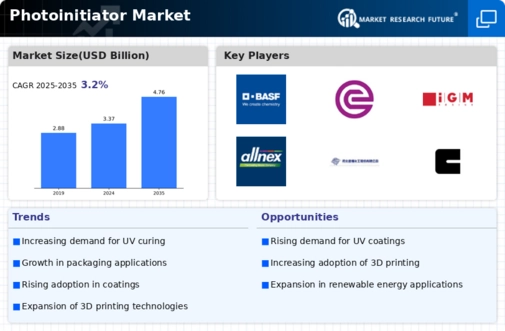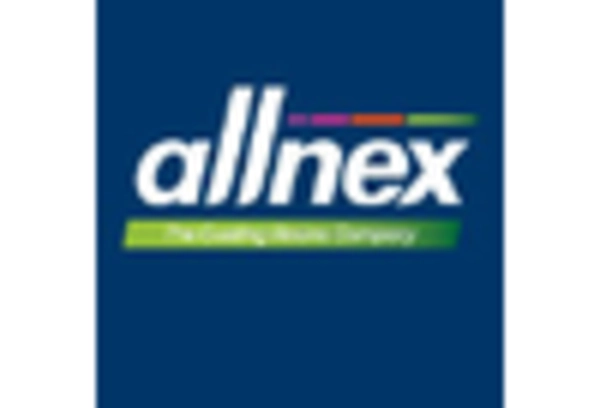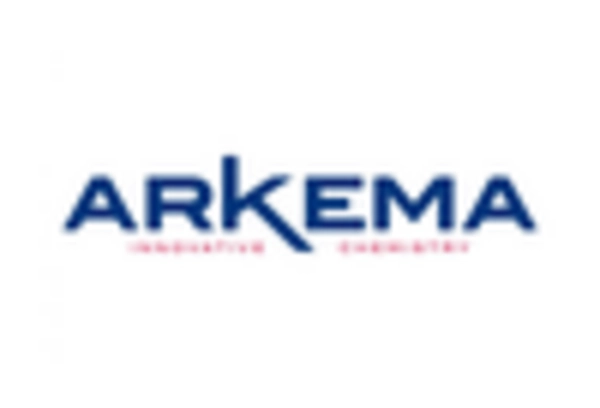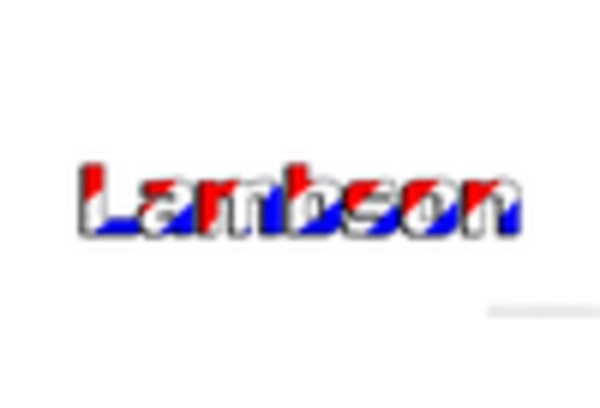Growth in the 3D Printing Sector
The Photoinitiator Market is witnessing growth driven by the burgeoning 3D printing sector. As additive manufacturing technologies gain popularity across various industries, the demand for photoinitiators used in UV-curable resins is on the rise. The 3D printing market is projected to grow at a CAGR of over 20%, creating substantial opportunities for photoinitiator manufacturers. This growth is attributed to the increasing adoption of 3D printing in sectors such as healthcare, automotive, and consumer goods, where rapid prototyping and customization are essential. Consequently, the Photoinitiator Market is likely to expand as it aligns with the innovative needs of the 3D printing landscape.
Increasing Regulatory Compliance
The Photoinitiator Market is significantly impacted by the increasing regulatory compliance regarding environmental and health standards. Stricter regulations on volatile organic compounds (VOCs) and hazardous substances are prompting manufacturers to seek photoinitiators that comply with these guidelines. This shift is leading to a growing preference for low-toxicity and eco-friendly photoinitiators, which are essential for meeting regulatory requirements. As industries strive to enhance their sustainability profiles, the demand for compliant photoinitiators is expected to rise. This trend not only supports the Photoinitiator Market's growth but also encourages innovation in developing safer and more efficient products.
Expansion in the Adhesives Sector
The Photoinitiator Market is significantly influenced by the expansion of the adhesives sector. With the increasing use of UV-curable adhesives in various applications, including automotive, electronics, and construction, the demand for photoinitiators is expected to rise. The adhesives segment is anticipated to grow at a CAGR of around 7% in the coming years, driven by the need for faster curing times and improved bonding strength. Additionally, the trend towards lightweight materials in automotive and aerospace applications necessitates the use of advanced adhesive technologies, further boosting the photoinitiator demand. As a result, the Photoinitiator Market is poised for growth, reflecting the evolving needs of diverse industries.
Rising Demand in Coatings and Inks
The Photoinitiator Market is experiencing a notable surge in demand, particularly within the coatings and inks sector. This growth is primarily driven by the increasing adoption of UV-curable coatings, which offer rapid curing times and enhanced durability. According to recent data, the coatings segment is projected to account for a substantial share of the market, with a compound annual growth rate (CAGR) of approximately 8% over the next few years. The shift towards eco-friendly and low-VOC formulations further propels the need for photoinitiators, as manufacturers seek to comply with stringent environmental regulations. Consequently, the Photoinitiator Market is likely to witness a robust expansion as industries prioritize sustainable practices while enhancing product performance.
Technological Innovations in Photoinitiators
Technological advancements play a crucial role in shaping the Photoinitiator Market. Innovations in photoinitiator chemistry, such as the development of new formulations that enhance efficiency and reduce energy consumption, are gaining traction. These advancements enable manufacturers to produce high-performance products that meet the evolving demands of various applications. For instance, the introduction of dual-cure photoinitiators has expanded the scope of applications, allowing for greater versatility in curing processes. As industries increasingly seek to optimize production efficiency and reduce costs, the Photoinitiator Market is likely to benefit from these technological innovations, fostering a competitive landscape.

















Leave a Comment